Can artificial upwelling restore nutrients to surface waters where aquaculture is practiced?
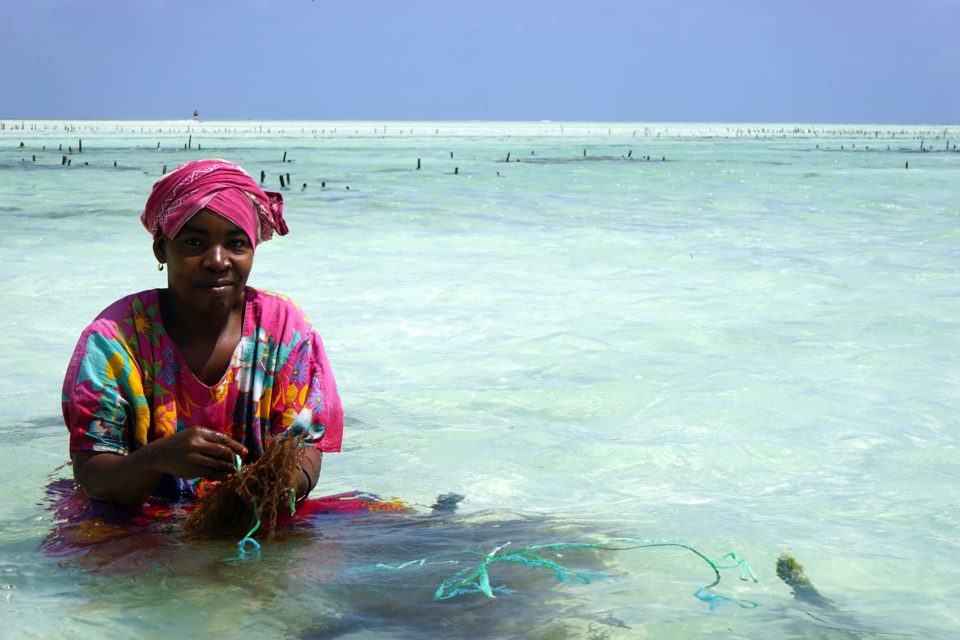
The oceans are heating up – and fast. Since 1992, the rate of ocean warming has nearly doubled compared with the previous three decades. And while the oceans absorb more than 90 percent of the heat trapped by carbon dioxide and other greenhouse gases, a great deal of that heat remains near the surface, like a warm layer of bath water.
This is troubling news for marine aquaculture. Warmer waters will likely mean an influx of new pathogens, an uptick in toxic tides and an increase in the toxicity of common pollutants that affect fish and other seafood.
Brian Von Herzen Ph.D., founder of the Climate Foundation, has spent the last decade working on an effort to redistribute and bring down ocean surface temperatures combining two fields: geophysical fluid dynamics and marine biology.
As Von Herzen sees it, much of the open ocean is now an aquatic desert.
“Before global warming, we had natural upwelling,” he said. “Wind stress caused the deep water to come up.” Along with that cooler water came nutrients that fed all varieties of seaweed and kelp. Now, that upwelling has been greatly reduced, leading to a wide range of problems.
Our vision for the future is to have a free-floating, self-guided system. It provides a holdfast and we can literally irrigate the kelp.
Restoring equilibrium to ocean ecosystems
The situation off the California coast in particular has been especially severe. Over the last eight years, the temperature of the water has risen dramatically due to a combination of global warming, the Big Warm Blob and El Nino, peaking in 2014 and 2015. By 2016, the kelp cover in the region was reduced by 93 percent. And because kelp is a foundational species that provides habitat, forage fish such as anchovies and sardines have also suffered, causing thousands of sea lions to starve.
Bringing back kelp and other macroalgae are key to balancing the ocean’s water temperatures and restoring its ecosystems, said Von Herzen. He and the scientists he works with have developed an approach called ocean permaculture that involves using wave power to bring water and nutrients up from the colder, lower levels of the ocean. Once they are brought up to the ocean’s top, “mixed layer,” the nutrients would feed kelp and seaweed on an array, or a light-weight latticed structure, built to hold a new habitat for a variety of aquatic life.
“Our vision for the future is to have a free-floating, self-guided system,” he said at a talk he gave before an audience in San Francisco in May. “It provides a holdfast and we can literally irrigate the kelp.”
Von Herzen and a group of fellows from Princeton and Stanford universities are spending the summer building an ocean permaculture array and trialing it in the waters off Woods Hole, Mass., USA. The array will be roughly half a square mile in size, and it will be submerged 80 feet below sea level.
Once it’s completed they’ll ship it to the Indian Ocean island nation of Zanzibar, where it will be used to help bring back red Eucheuma seaweed, which – until recently – was one of the nation’s major exports, worth $8 million a year. Red seaweeds are used in cosmetics, lotions, toothpaste and medicines and have generally been farmed and harvested by women on Zanzibar who haven’t traditionally had their own source of income.
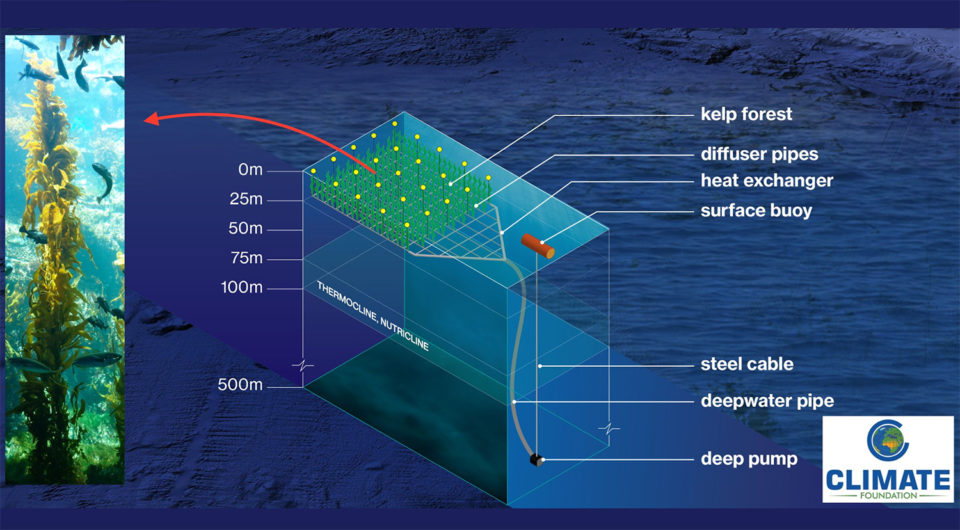
Bolstering food security
The Climate Foundation received $2.4 million in funding from the Australian government through this year’s Blue Economy Challenge as part of a larger effort to help bring a means of self-sufficiency to the developing nations around the Indian Ocean. Ocean permaculture was one of just nine projects to win the award, out of several hundred applicants.
“We received a pretty interesting landscape of innovations and the marine permaculture array really rose to the top because it was so unusual,” said Barbara Martinez of Conservation X Labs, a startup working to bring about more tech innovation in the conservation and development spaces, which collaborated with the Australian government on the challenge.
While improving food production directly was the main focus of the Climate Foundation’s application, Martinez said, the wider implications for ocean restoration are also significant. “It could be used to restore parts of the ocean where kelp that provides habitat for other marine species is no longer thriving,” she added.
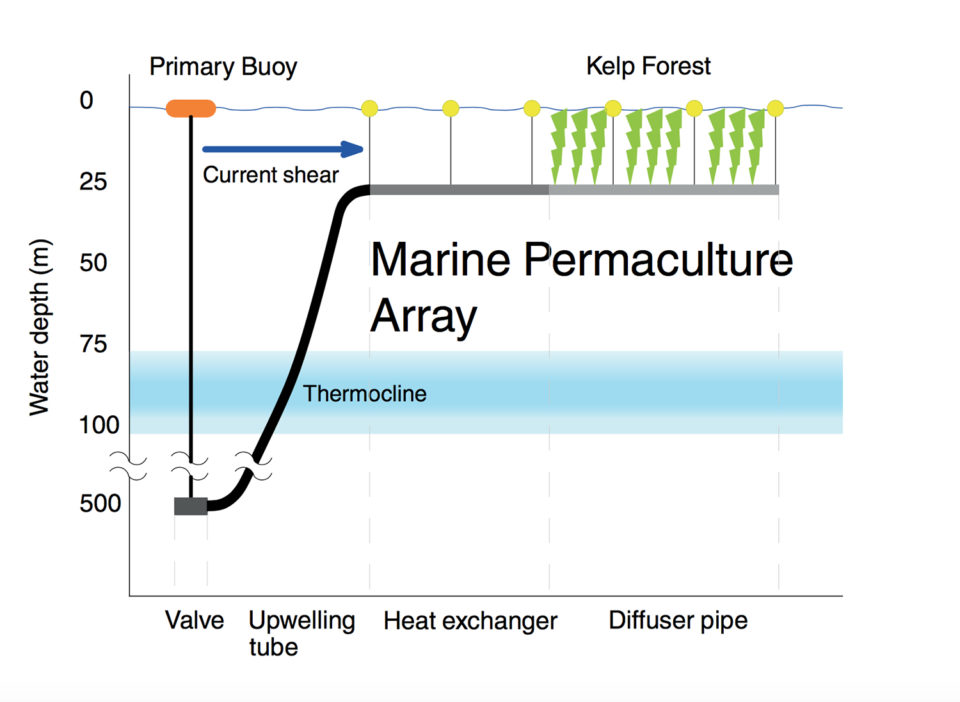
Von Herzen sees ocean permaculture as key to food security. The floating arrays would not only be able to host seaweed and shellfish, but also provide a resilient, fast-growing source of food and shelter for forage fish and game fish.
As with land-based permaculture, however, that production is more focused on building an ecosystem and establishing an equilibrium in which everything goes to use, than on containing a single species in a net. Von Herzen calls it “free range aquaculture” and believes the array can yield “hundreds of tons of fish and thousands of tons of macroalgae per square kilometer,” he said.
Permaculture arrays could also potentially benefit nearby open-ocean aquaculture facilities. “We see the future of aquaculture being closely coupled to the development of marine permaculture,” he said. “We have an air conditioning system provided by nature.”
The Climate Foundation and the other winners of the challenge are also going through an accelerator program called Ocean X Labs, which provides opportunities for meetings with investors, mentors and advisors that are designed to help them scale up their ideas, “from the idea of prototypes into deployable innovation that will have an effect on improving ocean conservation,” said Martinez.
The Climate Foundation has received support from the Bill & Melinda Gates Foundation, U.S. Fish and Wildlife and the National Academy of Sciences Keck Futures Initiative for its work. Von Herzen wants to commercialize the process and has been in talks with investors around the world over the last year. “We’ve had interest from Hawaii, French Polynesia, New Zealand, Indonesia and the Middle East. Those are just the places I’ve visited in the last year.”
Exactly how many pipes and floating arrays it would take to make a significant impact is hard to say, but Von Herzen also appears to be aware of the obstacles ahead. “It’s not going to be easy – it’s going to take millions of dollars to do it, but we believe ocean permaculture is the future,” he said.
Martinez also sees the potential for transformative change at a time when climate change is ratcheting up the stakes for the ocean: “If this was deployed at a fairly large scale, we would see a very noticeable impact.”
Follow the Advocate on Twitter @GAA_Advocate
Now that you've reached the end of the article ...
… please consider supporting GSA’s mission to advance responsible seafood practices through education, advocacy and third-party assurances. The Advocate aims to document the evolution of responsible seafood practices and share the expansive knowledge of our vast network of contributors.
By becoming a Global Seafood Alliance member, you’re ensuring that all of the pre-competitive work we do through member benefits, resources and events can continue. Individual membership costs just $50 a year.
Not a GSA member? Join us.
Author
-
Twilight Greenaway
Twilight Greenaway is a freelance writer and editor and a contributing editor to Civil Eats.com.
Tagged With
Related Posts
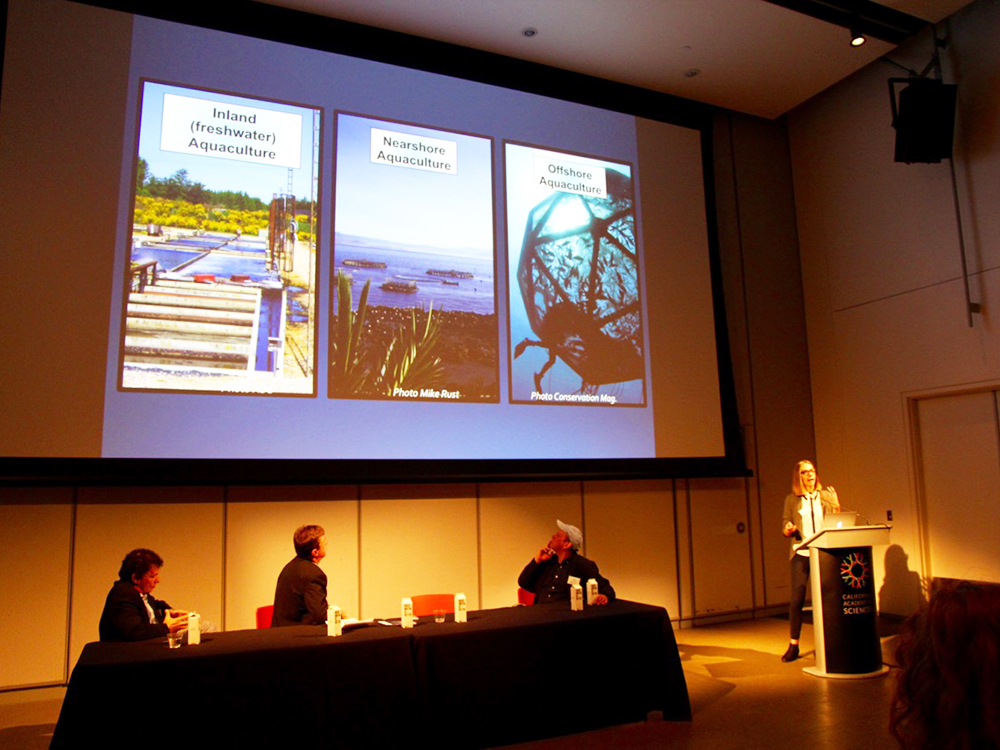
Responsibility
Going deep on offshore aquaculture
Open-ocean aquaculture, the “new kid on the block” in the rapidly growing aquaculture industry, was examined at a California Academy of Sciences event. New contributor Twilight Greenaway reports.
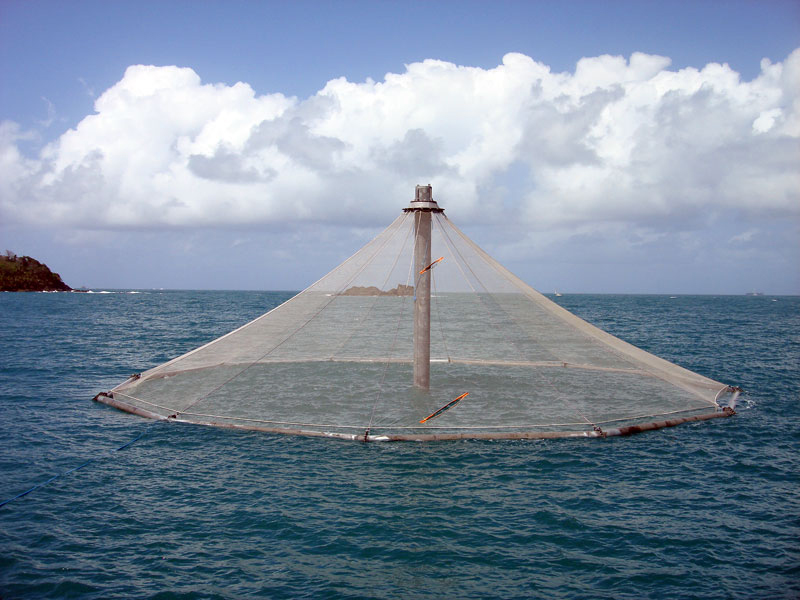
Responsibility
Do you know offshore aquaculture when you see it?
Researchers have determined that a definition of “offshore aquaculture” was necessary to critically assess the impacts and benefits of moving fish farming operations “slightly farther and slightly deeper” out to sea.
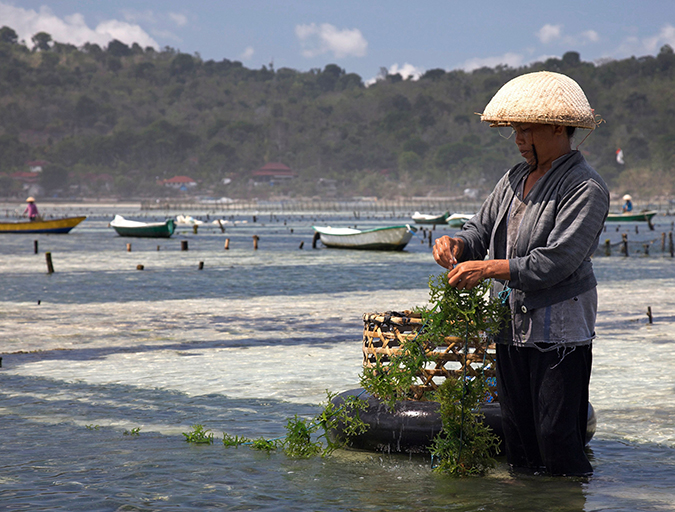
Responsibility
Can sustainable mariculture match agriculture’s output?
Global, sustainable mariculture production, developed on a massive, sustainable scale and using just a small fraction of the world’s oceanic areas, could eventually match the output of land-based agriculture production. Scale and international law considerations require the involvement of many stakeholders, including national governments and international organizations.
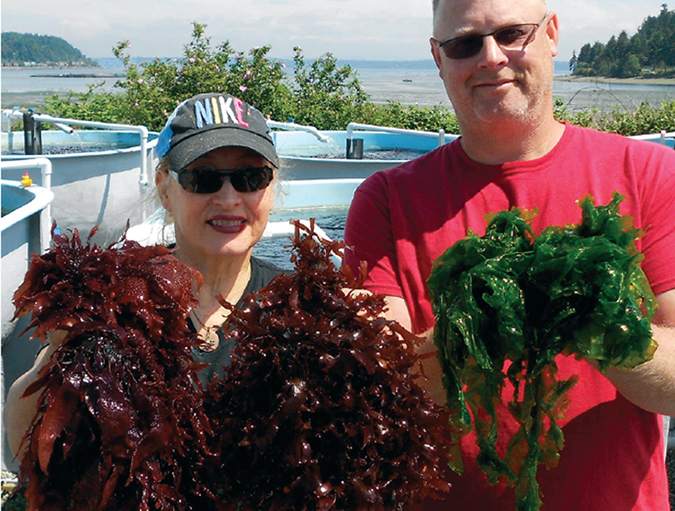
Intelligence
Land-based macroalgae farming
Land-based cultivation of macroalgae can minimize impacts on wild macroalgae stocks while reducing harvest costs and controlling quality. Integration of macroalgae with land-based fish culture systems could reduce capital and operating costs.



